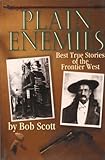
A confluence of both science and history, this book describes natural areas in Kentucky that have vanished and inventories a long list of threatened and endangered animals, plants and unique habitats in the state that need protection.
Once 90 percent forested, Kentucky is now made up of roughly 46 percent "Large Forest Tracts" and most of it is fragmented and less able to sustain complex communities of animals and plants. Consequently, more than 50 species of animals and plants that once made Kentucky their home can no longer be found. Of the species that remain, 25 percent of the fish, 26 percent of the reptiles and amphibians, 13 percent of the birds and 20 percent of the mammals are endangered, threatened or close to leaving for good.
More than just a chronicle of loss, this is a guide to places where the species and the habitats that remain can be visited and appreciated. These include federally protected areas (national parks, refuges and forests) and 59 state nature preserves.
Illustrated with numerous maps and remarkable photos of surviving species like the dazzling blue-and-orange flame crayfish or the bright magenta limestone flame flower, this book is an accessible reference for both professional biologists and armchair travelers.
An Illustrated Guide to Biodiversity
by Greg Abernathy, Deborah White, Ellis L. Laudermilk, and Marc Evans
The University Press of Kentucky, 2010
 Take four emblematic American scenes: the Hall of Biodiversity at the American Museum of Natural History in New York; Disney’s Animal Kingdom theme park in Orlando; an ecotour of Yellowstone and Grand Teton National Parks; the film An Inconvenient Truth. Other than expressing a common interest in the environment, they seem quite dissimilar.
Take four emblematic American scenes: the Hall of Biodiversity at the American Museum of Natural History in New York; Disney’s Animal Kingdom theme park in Orlando; an ecotour of Yellowstone and Grand Teton National Parks; the film An Inconvenient Truth. Other than expressing a common interest in the environment, they seem quite dissimilar.






